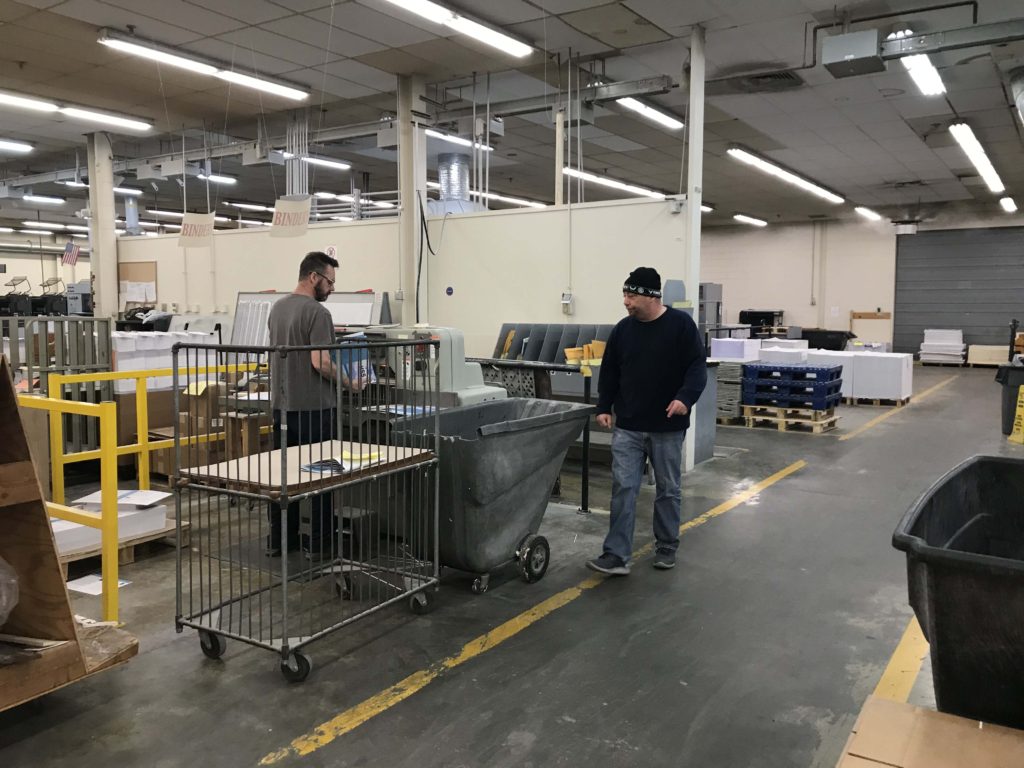
By Josh LaBella
Voice Reporter
John Robinson, CEO of GHP Media – still known locally as “Herlin Press,” believes smart commercial printers used to find a narrow niche in the business and focus on that. Dumb commercial printers, such as himself, he said, like to do a lot of different things. That business gambit has taken a small, well-known local printer to the next level.
“That strategy I think has actually proven viable these days,” said Robinson, “because the universe of printers has shrunken so dramatically.”
Robinson said when he got into the business 40 years ago there were at least 30 commercial printers the size of GHP within a 20 mile radius but today there is maybe four.
He said the printing company does virtually everything including work for the fine arts, most museums in Connecticut and New York as well as for the fashion industry. He said they also do a lot of work for schools and universities. According to Robinson, they take on jobs big and small.
“We do work for everybody,” said Robinson. “Everything from $30 business cards to quarter of a million dollar coffee table books.”
GHP has 160 employees and, last year, did $128 million in revenue. He said for the past 8 years the company has been profitable, even with thin margins. Robinson said he bought Herlin Press in 2001 and combined it with his own company, Gist.
“We’ve acquired something like 16 or 17 other companies,” said Robinson, “in the last 15 or 16 years and tucked them all in here.”
Robinson, who graduated Yale Business School in 1980, said he wanted to go into manufacturing because he likes making things. He said he decided to stay in Connecticut because he likes the state. According to Robinson, GHP tries to give back to the community.
“We do a lot of student publications,” said Robinson. “We give students tours to kind of expose them to what we’re doing here.”
One of the biggest changes in the business, Robinson said, is the speed with which jobs go through the shop.
“It used to be we had pretty much two weeks to do almost anything,” said Robinson. “And if it was a complicated job, a coffee table book, we had two or three months. Today we sometimes have a day or two.”
Another drastic change in the industry, he said, was the method of storing the plates used to remake old jobs. Robinson said it used to be film and they had 5,000 square feet of floor space dedicated to storing old jobs.
“Today we have two square feet in a computer,” said Robinson. “We store probably 5 times as many.”
Robinson said geography gives his company an edge over the competition, being so close to New York. He said the company is also blessed with a lot of good employees.
“As the industry has contracted we’ve been able to attract and retain some of the best people and they have a great attitude and great skills,” said Robinson. “They’re what make the business run.”